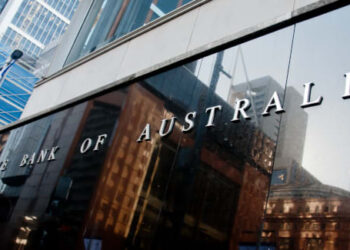The Reserve Bank of Australia (RBA) considered a 50 basis point (bp) increase, a 25 bp increase or no change in the cash rate at its last meeting for 2022, it revealed in the minutes of its December meeting on Tuesday.
The central bank announced another 25 bp rate hike on 6 December, taking the official interest rate to 3.1 per cent.
In deliberating its move, the RBA said arguments for a 50 bp increase stemmed from the fact that inflation remained too high, and that the economy continued to operate with excess demand.
The bank said its board reflected on other economies that had earlier been in a similar situation to Australia and had subsequently seen wages growth pick up strongly and admitted to being worried that returning inflation to target was likely to involve a period of very weak demand, and possibly a recession.
But having determined that “Australia was not yet in such a situation”, and that the inflation mindset was shifting, the board decided to take more “pre-emptive action”.
The arguments for a 25 bp increase also recognised the need to bring demand and supply in the economy more into balance, the RBA said. It also acknowledged that there had already been a significant cumulative increase in interest rates and that the full effects of this adjustment would take time to occur.
Flagging the possibility that the policy changes might be transmitted to the economy more slowly than usual, the RBA said, “the policy changes would begin to have more of an effect through the course of 2023”.
The RBA predicted that the share of household income being spent on required mortgage payments would reach around its previous highest level in late 2023. This, it said, together with declining real incomes and falling house prices and sales volumes, is expected to weigh on consumption in the year ahead, while global demand is also expected to weaken.
Finally, the arguments for no change in the cash rate placed further emphasis on the lagged effects of the large policy adjustment to date, and the value of proceeding cautiously in an uncertain environment.
However, members noted that the bank’s most recent forecasts indicated that, even with further increases in the cash rate as incorporated into the November forecasts, inflation was expected to take several years to return to the target range. Moreover, the RBA reflected on the fact that no other central bank had yet paused.
“Members acknowledged that there were arguments in favour of each of these courses of action. They concluded that the case to increase the cash rate by 25 basis points at the present meeting was the strongest one,” the RBA said.
“A further increase in the cash rate was likely to be necessary to achieve a more sustainable balance of demand and supply, but there had already been a material increase in the cash rate in a short period of time and there were lags in the operation of policy”.
The RBA also acknowledged that public perception played a part in its decision, noting the importance of “acting consistently”.
“Shifting to either larger increases or pausing at this point with no clear impetus from the incoming data would create uncertainty about the board’s reaction function”.
Ultimately, the RBA reiterated that it expects to increase rates further and noted that a range of options for the cash rate could be considered again at upcoming meetings in 2023.
“The board did not rule out returning to larger increases if the situation warranted. Conversely, the board is prepared to keep the cash rate unchanged for a period while it assesses the state of the economy and the inflation outlook,” it concluded.







